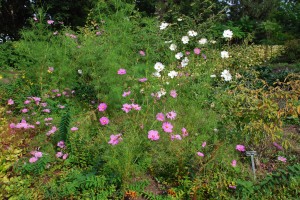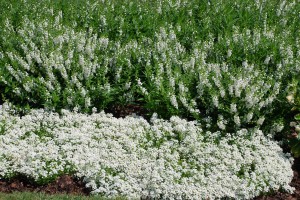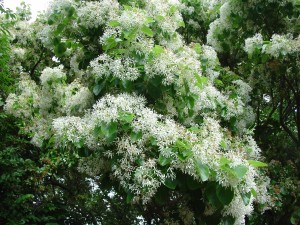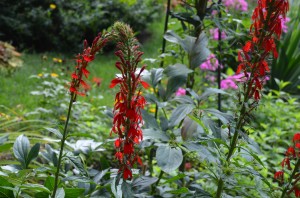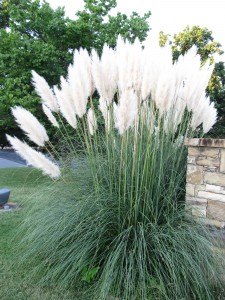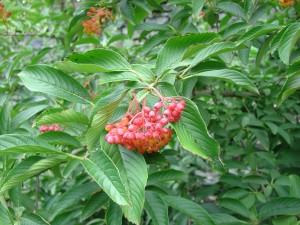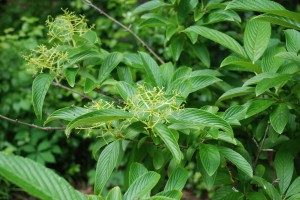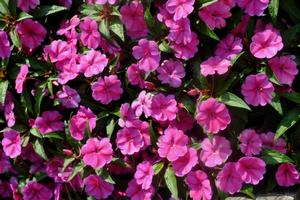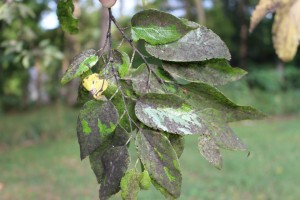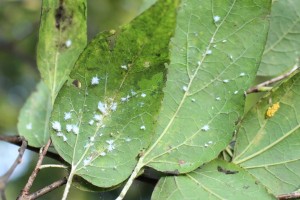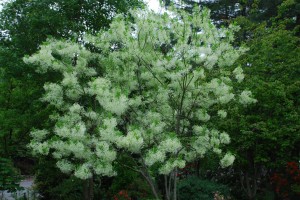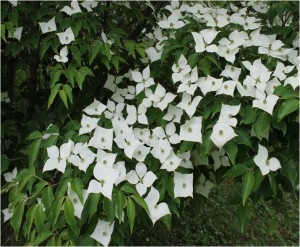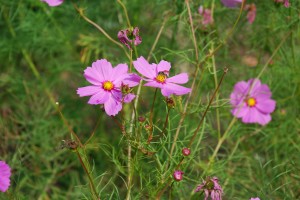
Reliable Cosmos
Cosmos, indigenous to Mexico and South America, are one of the easiest-to-grow flowering annuals. They start blooming in early summer and are at their best in late summer and early autumn. Two most popular species are Cosmos sulphureus and C. bipinnatus. Flower heads are composed of disc and ray flowers.
Cosmos is a member of the aster family. Today’s hybrids are brightly colored (red, pink, orange or white) that bloom freely like wildflowers. They attract birds and butterflies, particularly Monarchs. Blooms make terrific floral bouquets that will last for 7 – 10 days. Cosmos light green foliage is very fern-like.
Be aware that cosmos self-seeds freely. You may self-seed directly into the spring garden after the last spring-frost date or purchase plants at garden centers. Space plants approximately 1-2 feet apart; with tall varieties, space plants closer and let them support one another.
Cosmos thrive in average to subpar soils at neutral or slightly alkaline pH and that are well-drained. Plant heights vary from 1 to 5 feet depending on soils, cultivars, moisture, and fertilization. Excess soil nutrition will cause plants to grow luxuriantly at the expense of flower numbers. Plants tend to flop over in rich soil and may require staking to prevent stem breakage in high winds.
Pinch off spent flowers to encourage continuous bloom. Pinching stem tips reduces plant height and encourages branching, although is rarely necessary. Cosmos are mostly free of disease and pest troubles.

